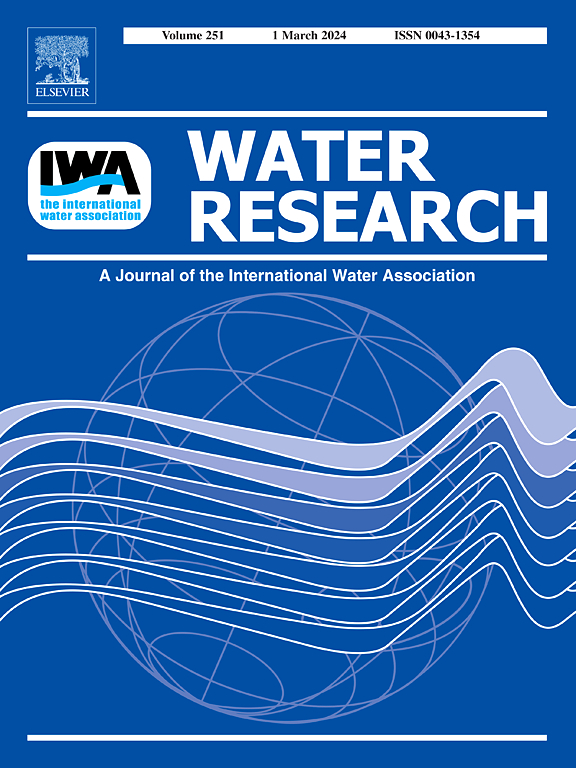Population immunity enhances the evolution of SARS-CoV-2 in Beijing revealed by wastewater genomic surveillance
IF 11.4
1区 环境科学与生态学
Q1 ENGINEERING, ENVIRONMENTAL
引用次数: 0
Abstract
This study aims to elucidate the impact of population immunity on the regional evolution of SARS-CoV-2. A total of 3701 wastewater SARS-CoV-2 concentration values and 168 wastewater whole genomes of SARS-CoV-2 were obtained in Beijing over 11 months following the implementation of the "dynamic zero-COVID" policy adjustments in December 2022. The findings indicate that the number of variant strains identified through wastewater surveillance was 2.46 times greater than that detected by clinical monitoring, with single nucleotide polymorphisms showing an increase of up to 7.14 times. This enhanced surveillance facilitates a more comprehensive analysis of regional virus evolution patterns. Following the adjustment of epidemic measure, Beijing experienced three distinct waves of epidemics, and the dominant variant transitioned directly from BA.5 in the first wave to XBB after six months in the second one. During this period, strong population immunity formed by centralized infection in over 90 % of the population blocked the outbreak of internationally prevalent and concerning variants BQ.1 and CH.1.1, resulting in a 12.5 % faster regional evolution of SARS-CoV-2 strains in Beijing compared to the international context. Subsequently, in August 2023, EG.5 became the dominant variant in the third wave, aligning with international trends. The epidemics in Beijing have caused significant positive selection pressure on SARS-CoV-2 strains, favoring those with enhanced antigenic escape mutations in spike gene. These results underscore that the extensive infection after the adjustment of epidemic prevention policies has accelerated the evolution of SARS-CoV-2 in Beijing and been conducive to antigenic escape evolution, which can effectively inform decision making for epidemic control and preemptive vaccine design.


求助全文
约1分钟内获得全文
求助全文
来源期刊

Water Research
环境科学-工程:环境
CiteScore
20.80
自引率
9.40%
发文量
1307
审稿时长
38 days
期刊介绍:
Water Research, along with its open access companion journal Water Research X, serves as a platform for publishing original research papers covering various aspects of the science and technology related to the anthropogenic water cycle, water quality, and its management worldwide. The audience targeted by the journal comprises biologists, chemical engineers, chemists, civil engineers, environmental engineers, limnologists, and microbiologists. The scope of the journal include:
•Treatment processes for water and wastewaters (municipal, agricultural, industrial, and on-site treatment), including resource recovery and residuals management;
•Urban hydrology including sewer systems, stormwater management, and green infrastructure;
•Drinking water treatment and distribution;
•Potable and non-potable water reuse;
•Sanitation, public health, and risk assessment;
•Anaerobic digestion, solid and hazardous waste management, including source characterization and the effects and control of leachates and gaseous emissions;
•Contaminants (chemical, microbial, anthropogenic particles such as nanoparticles or microplastics) and related water quality sensing, monitoring, fate, and assessment;
•Anthropogenic impacts on inland, tidal, coastal and urban waters, focusing on surface and ground waters, and point and non-point sources of pollution;
•Environmental restoration, linked to surface water, groundwater and groundwater remediation;
•Analysis of the interfaces between sediments and water, and between water and atmosphere, focusing specifically on anthropogenic impacts;
•Mathematical modelling, systems analysis, machine learning, and beneficial use of big data related to the anthropogenic water cycle;
•Socio-economic, policy, and regulations studies.
 求助内容:
求助内容: 应助结果提醒方式:
应助结果提醒方式:


